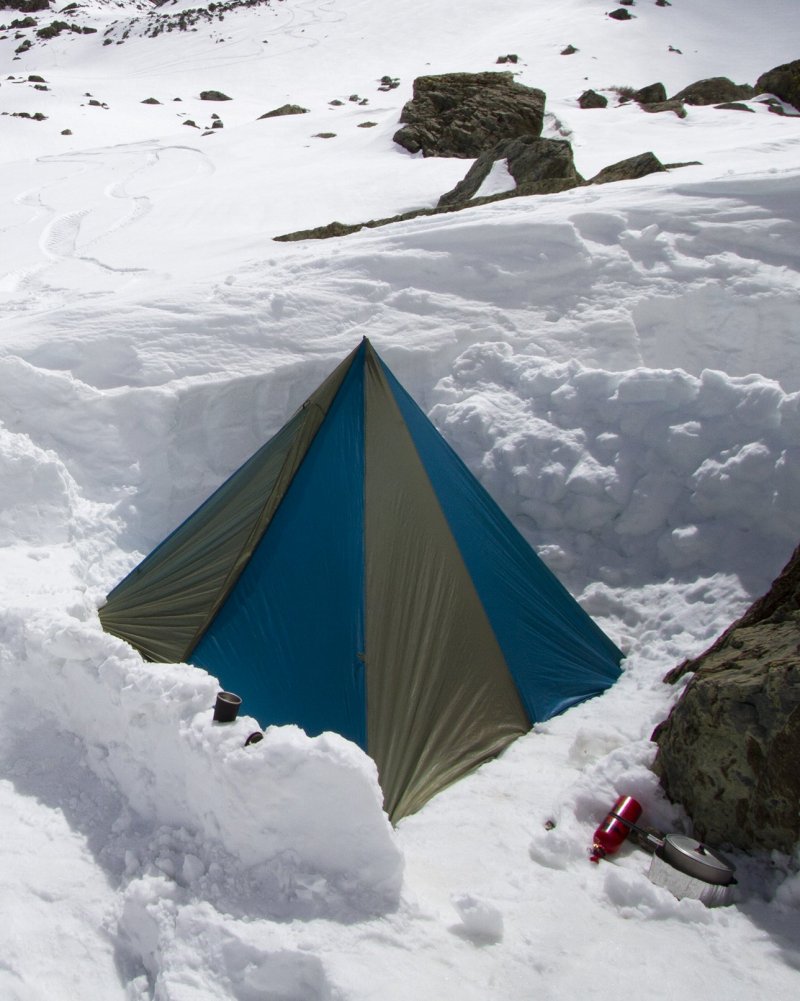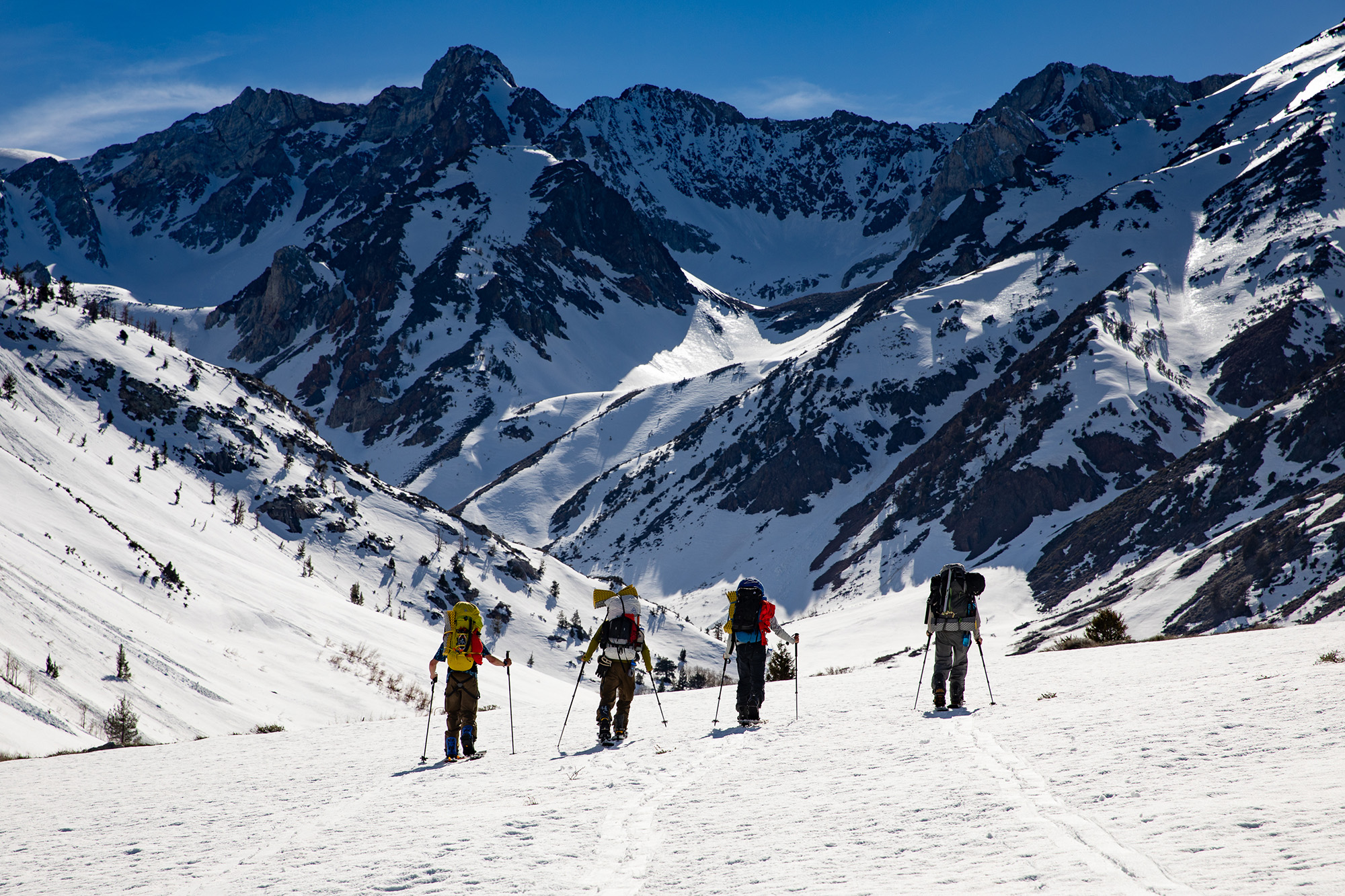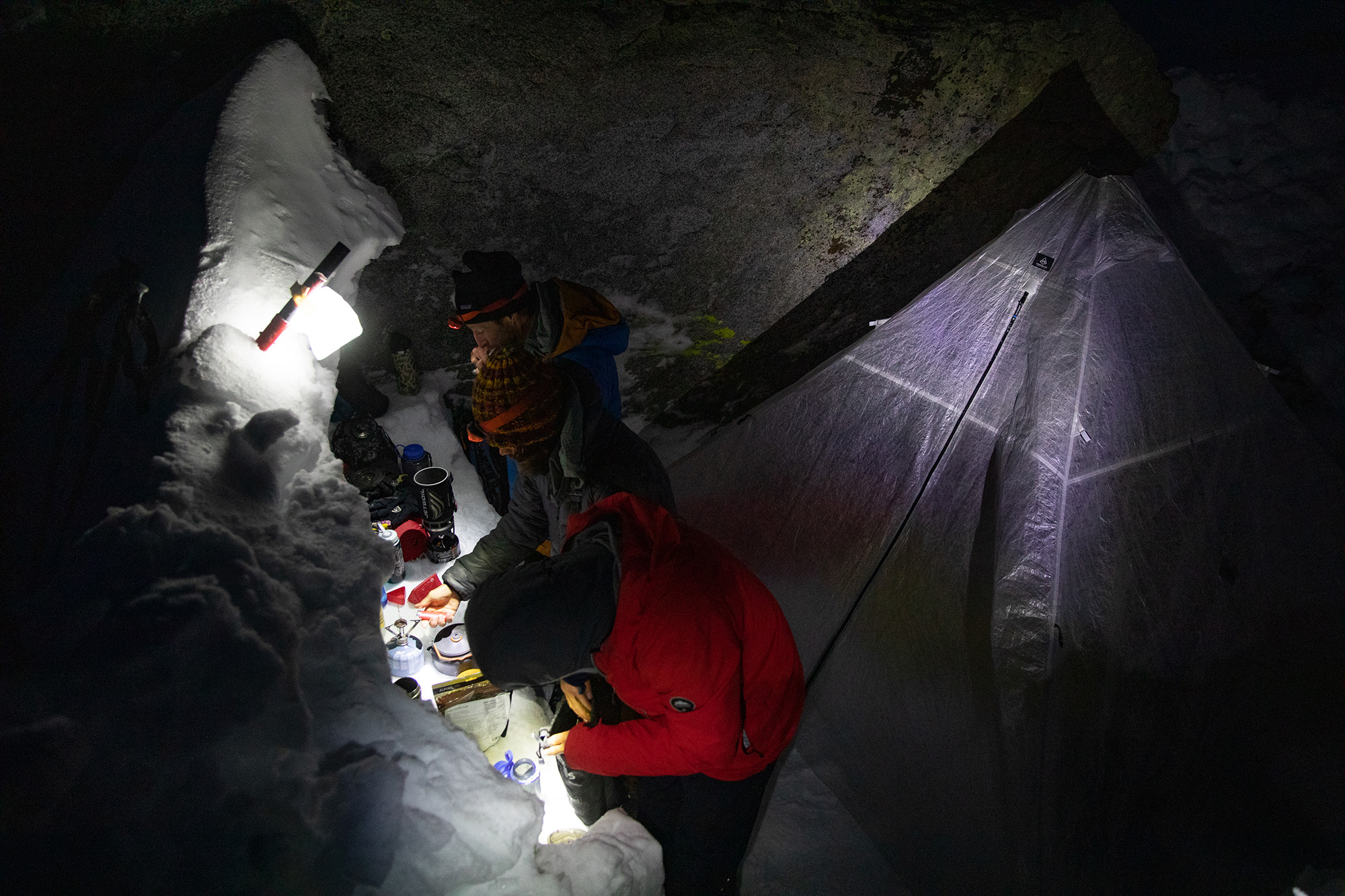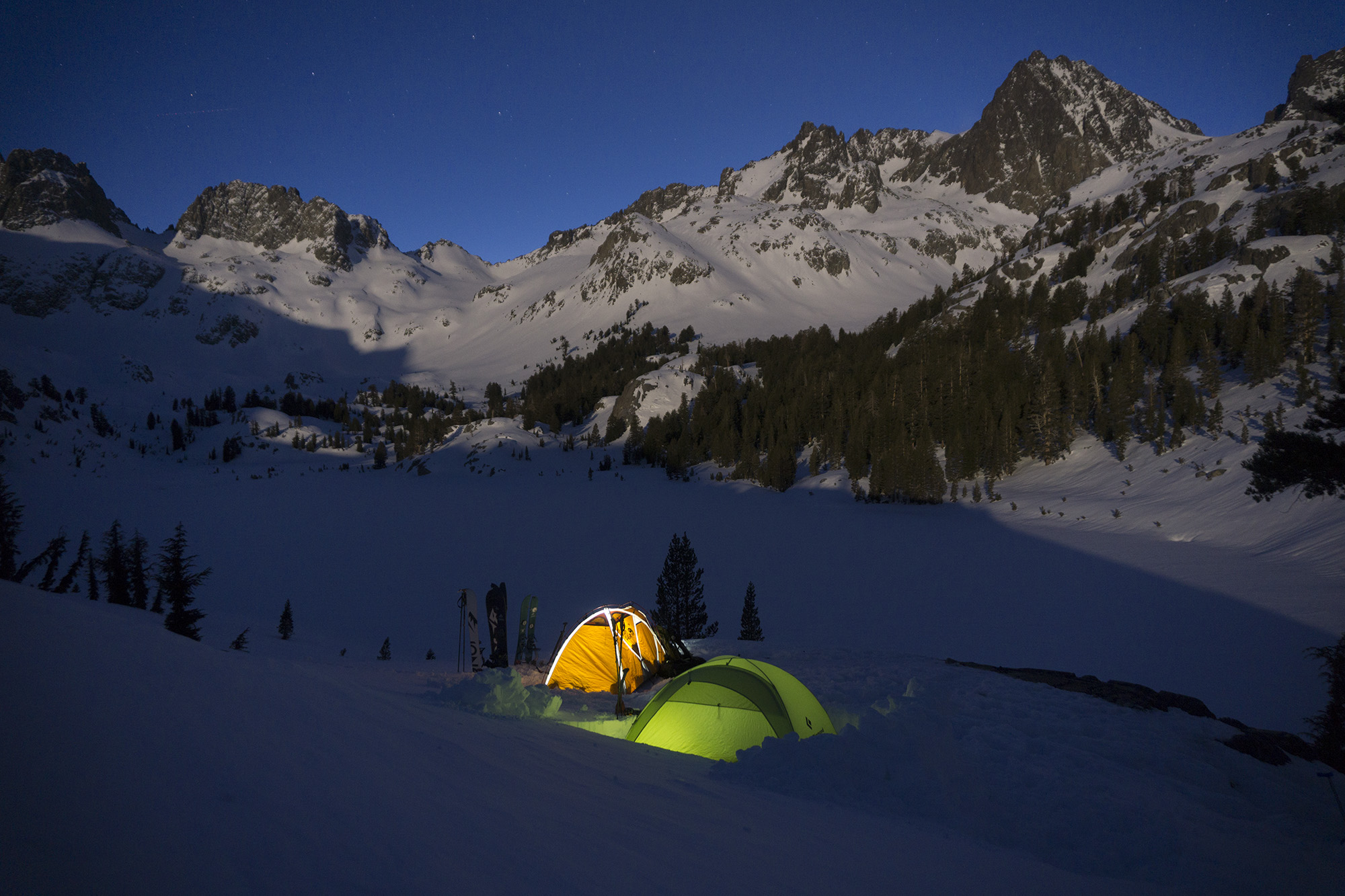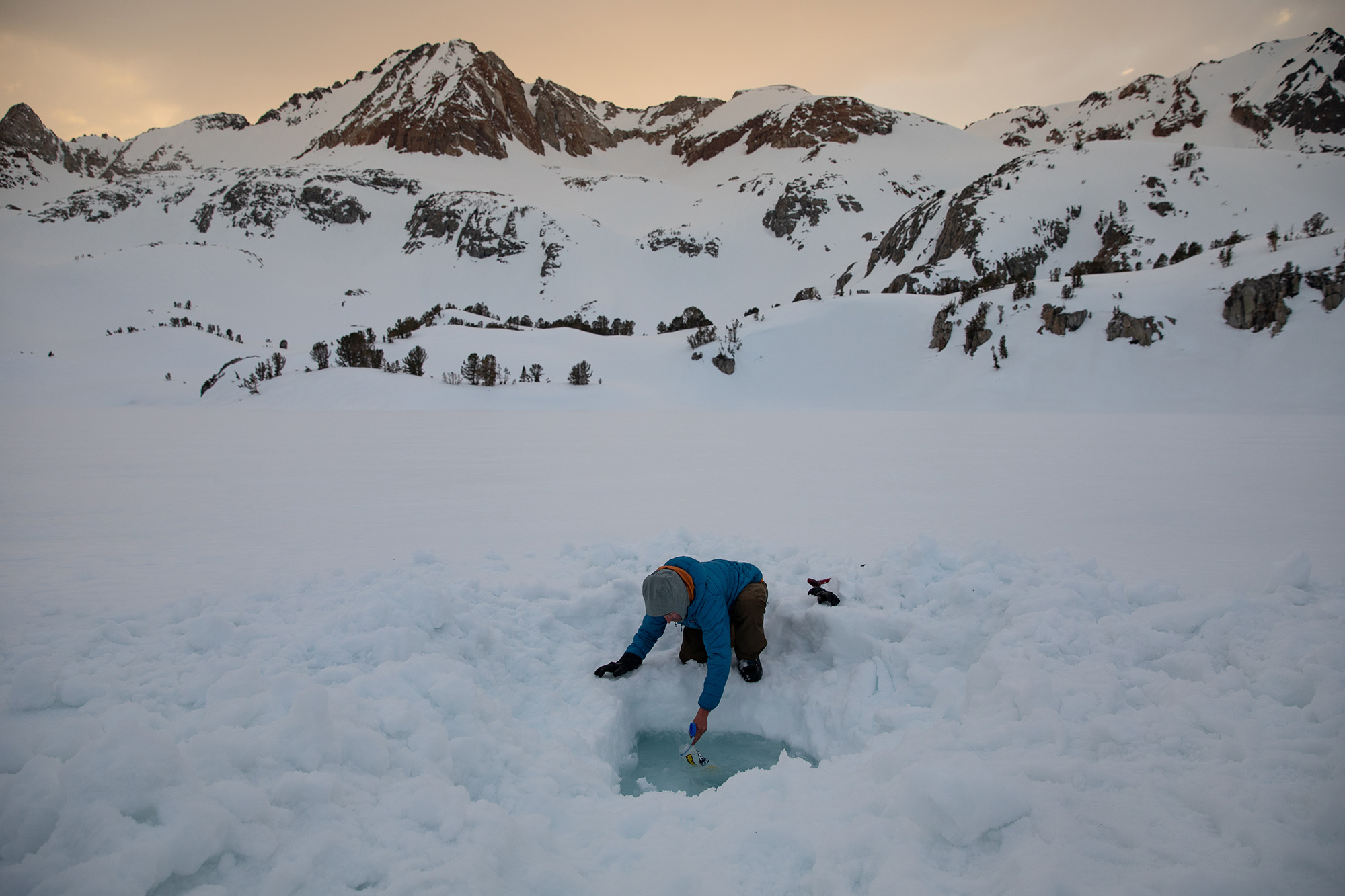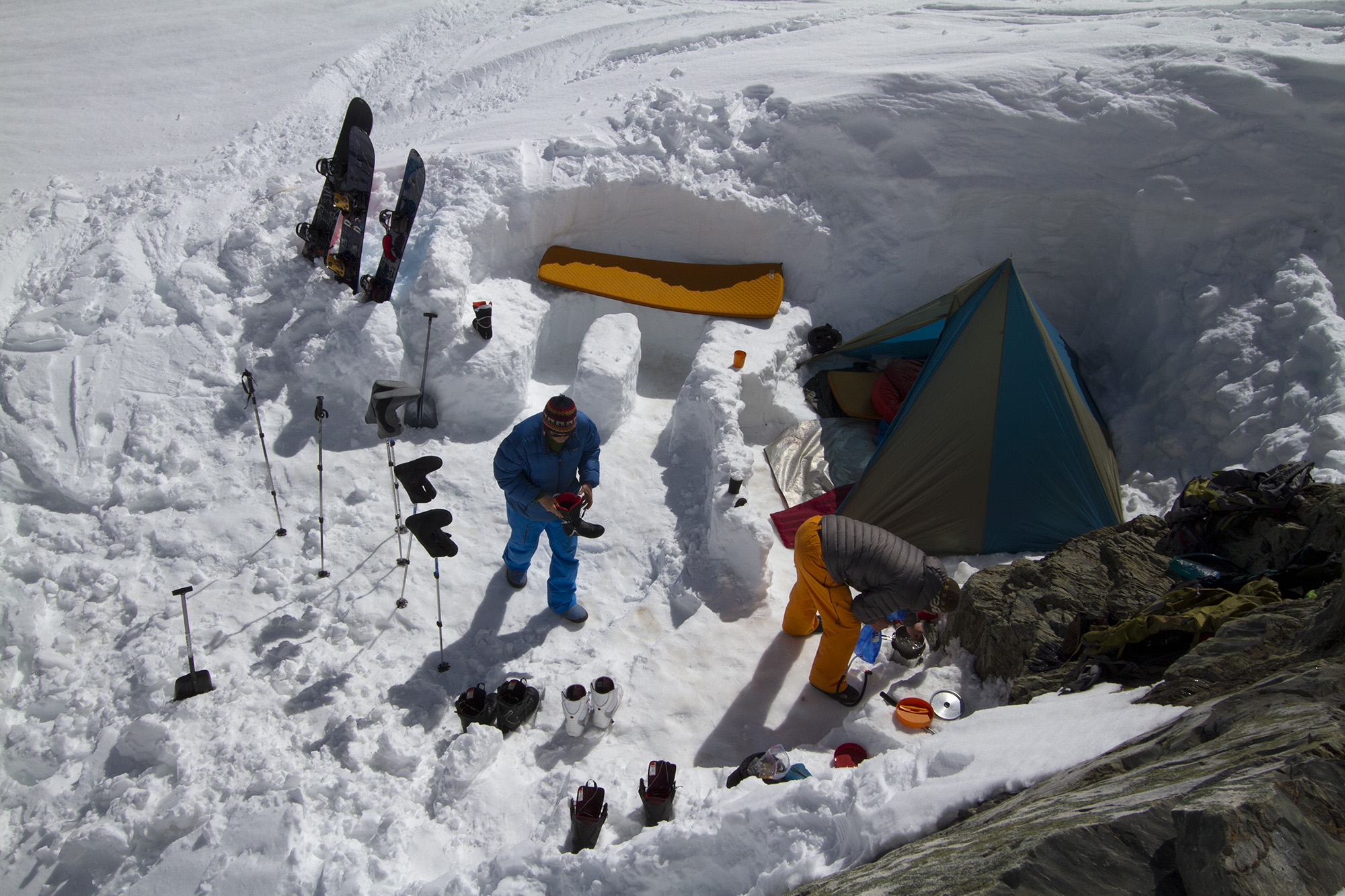Story by Nick Russell
Sleeping in the mountains is paradise. Walking into the backcountry and carrying everything you need to survive brings a gratifying sense of self-sustainability and strength. Although it can take a great amount of effort to sleep beneath your dream lines, the payoff is always worth it. We’re currently at the peak of my favorite point of the season. Days are long, the weather is generally stable and the snowpack in the alpine is deep. Late spring is the perfect time to venture out past the trailhead bivy and into the field for a couple nights of solitude.
Each time we set out on a mission, I come back with a new camping lesson to remember for next time. It is a constant process of trial and error to figure out what to bring and how best to dial in your camp site and sleeping scene.
To help you get comfortable sleeping on snow, I’m stoked to share some key insights about snow camping that I have picked up over the past few years. Every mission is different, but my overnight kit always consists of the same basic necessities and I pick my campsites based on the same guidelines.
Overnight Pack
Every ounce counts when it’s being carried on your back. The best overnight packs are lightweight and have enough volume and exterior straps to allow you to fit all your gear into one compact package. Depending on the length of the trip, a 50-70 liter pack with solid back support should be big enough to fit everything. Some people prefer to bring an additional smaller day pack for riding, strapped to the outside.
Sleeping Gear
A zero degree bag tends to be the go-to for spring missions here in the Sierra, but depending on current conditions you may need to adjust accordingly. It’s nice to bring two sleeping pads, one traditional blow-up pad, as well as a foam accordion pad. I sleep on the blow-up pad and use the foam pad hanging out at camp. When the weather is stable and winds are minimal, I prefer the open bivy. There is nothing like sleeping under the stars. That said, you never know what rogue storms systems may pass through, so having some sort of basic lightweight tent is usually the responsible move.
Cooking Gear
I usually run a basic MSR or JetBoil stove and a small kettle for boiling water. A utensil, small bowl and cup for coffee/tea is all you need.
Clothing
Your basic layers for a day tour should suffice, but you’ll want to add in a couple extra items for comfort. Perhaps the most important is extra socks. Whether you’re only out for a two day strike or hunkering down over several nights, having dry socks in the morning will make or break your trip. I like to bring two pairs of snowboard socks and one thicker pair for sleeping. To recycle used socks, keep them out in the sun during the day to dry and then place in your sleeping bag with you at night. In the morning you should have toasty toes on the skin track.
A thicker down jacket is perfect to wear when you are done riding. You’re generally finished with heavy activity for the day and the body is starting to cool down. A nice puffy jacket also acts as a great pillow.
After a long day of riding, you want to get out of wet boots and socks as quickly as possible. Unless you are ready to immediately crawl in your sleeping bag having additional footwear for wearing around camp is ideal. Down booties with a waterproof sole are preferred, but lightweight tennis shoes or flip flops will also do the trick.
CAMPSITE SELECTION
Picking the right place to set up camp can be the difference between comfort and chaos. Take the time to consider your surroundings before laying down the tent. Unless you are on a glacier, finding a zone around the treeline will provide protection from potential winds. Minimizing your camp’s exposure from the elements could make downtime much more pleasant if the wind picks up. Areas such as meadows and lake edges, clear from avalanche terrain, can be great places to call home.
One of the best things about springtime camping is that the streams and lakes are beginning to melt out around their edges. Having open water nearby is always a deciding factor in choosing where to post up for a few days. You will do yourself a huge favor by not having to melt snow; you’ll save an enormous amount of time and fuel by doing so.
It is nice to sleep as close as possible to the terrain you plan to ride in the coming days. Reducing your morning approach saves energy, thus resulting in more runs. Having a centrally located basecamp surrounded by multiple aspects and options also allows for more riding options throughout the day.
CAMP LIFE TIPS
Rather than being confined to your tent during downtime, a communal kitchen area is a nice place to relax after riding. Digging out a zone for cooking also helps to make operations run smoothly and keep gear organized. Blowing wind can deplete fuel sources quickly if you don’t have a proper shield. Shaping out blocks of snow and placing them around your kitchen table will act as a wall.
When the conditions are firing, time at camp is minimal. With the exception of a potential mid-day siesta during the heat of the day, you are basically using this area to sleep and eat. Some luxury items you might consider bringing to keep spirits high during rest periods include a small speaker, cards and of course, tons of snacks!
Apr

Apr

Apr

Mar

Mar

Mar

